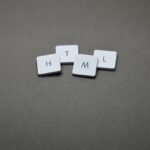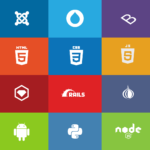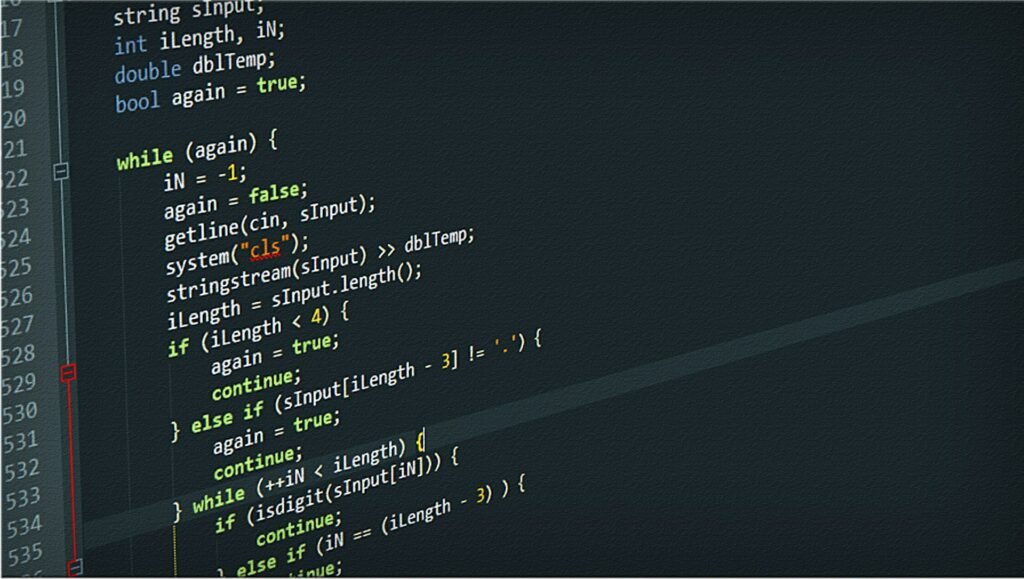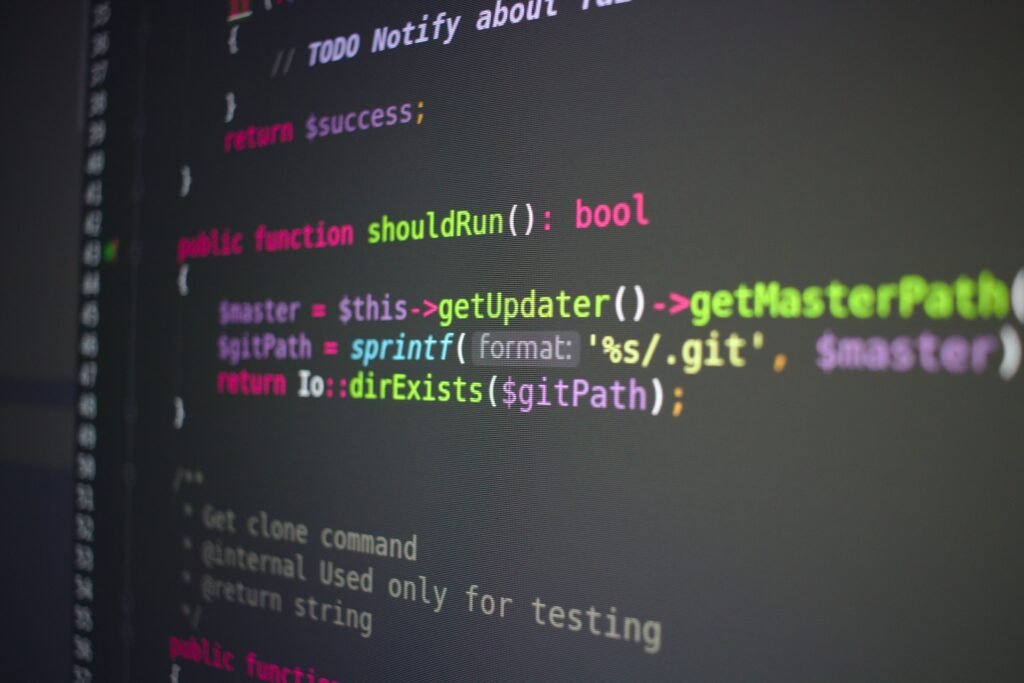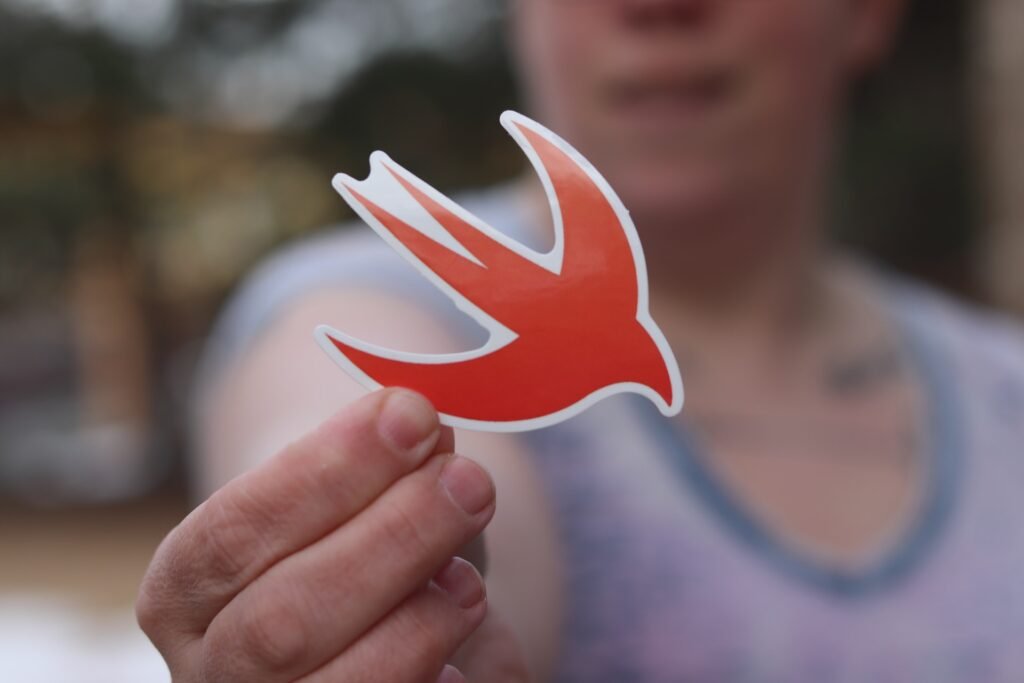What is Html
The acronym “HTML” means “Hypertext Markup Language.” The World Wide Web’s primary markup language for creating and organizing web page and web content. The layout and arrangement of a webpage’s content, including set webpage text, photos, videos, links, forms, and more, are defined by HTML language, which serves as the basis for online pages.

This is a straightforward HTML example.
Basic Html Syntax
<!DOCTYPE html>
<html>
<head>
<title>Current Web Page Title</title>
</head>
<body>
<h1>Welcome to Html</h1>
<p>Simple Paragraph</p>
</body>
</html>
Describe the above HTML code
- <!DOCTYPE html> – it identifies the current HTML version and document type being utilized.
- <html> – The root element in an HTML page is the – element begin html structure.
- <head> – section tag provides meta-data regarding information to the webpage, like the title shown in the title bar of the browser.
- <title> – The title of the website as it appears in a browser tab is provided by the – title tag element.
- <body> – The all graphical visible or viewable web page content of the website can be located in the body section.
- <h1> – A top-level heading1 element is assigned by the element, you can use it with heading1 to heading6 according to.
- <p> – this tag/element designates a text or start a new paragraph in current web page.
Html full form
“HTML” refers to “hypertext Markup Language” in its full form.
What In html code
Angle left and right brackets (“< >”) are used to denote each element in the HTML code. These components are used to organize a webpage’s or website content in html file.
- <!DOCTYPE html> – The HTML version and document type are defined by the<!DOCTYPE html> tag.
- <html> – The main part of an HTML document is the <html> begain tag.
- <head> – head section provides you with meta-data regarding the webpage, like the title shown in the title bar of the browser.
- <title> – The title of the website as it appears in a web browser tab is set by the <title> element.
- <body> – The viewable content of the website is found in the section.
- <h1> – A top-level heading is defined by the heading tag element.
- <p> – the paragraph element designates a text paragraph in html file.
Online html compiler
The following is a list of several popular online HTML editors and compilers where you may create, test, and examine your custom HTML code.
- Onlinegdb.
Https://www.onlinegdb.com/online_html_editor
- Online HTML Editor.
Https://html-online.com/editor/
- Codepen.
- Jsbin.
- Jsfiddle.
- HTML Online.
Https://html-online.com/editor/
Table to html
This is an illustration of how to make a simple HTML table.
Html table example
<!DOCTYPE html>
<html>
<head>
<title>Basic HTML Table Example</title>
</head>
<body>
<h1>Course Detail</h1>
<table border=”2″ bordercolor=”blue”>
<tr>
<th>#</th>
<th>Course</th>
<th>Fee</th>
<th>Duration</th>
</tr>
<tr>
<td>1.</td>
<td>Html</td>
<td>Rs – 499</td>
<td>1 Month</td>
</tr>
<tr>
<td>2.</td>
<td>Html5</td>
<td>Rs – 599</td>
<td>25 Days</td>
</tr>
</table>
</body>
</html>
In this particular case.
- The fundamental table structure is created using the <table> table element.
- The rows in the current table are defined by the <tr> table components.
- The table heading cells (in the initial row) of an HTML design are defined by the <th> table elements.
- The standard table data cells are defined by the <td> table components.
Html colour codes
In online web page or website design and development, colours are defined using HTML colour codes. There are several html color code choice and some of the are Hexadecimal (hex), RGB (Red, Green, Blue), and other notations, as well as colour names, can all be used to describe colours.
Here are some common ways to represent colors in HTML.
Hexadecimal Color Codes.
- Coral – #FF7F50
- Gold – #FFD700
- Green yellow – #ADFF2F
RGB Color Values.
- Blue – rgb (0,0,255)
- Navy – rgb (0,0,128)
- Red – rgb (255,0,0)
RGBA Color Values.
- Semi-transparent Red- rgba(255, 0, 0, 0.5)
Color Names.
- Lime – lime
- Green- green
- Blue – blue
Tag in html
The building elements or commands used in HTML to organize and specify the written material of a design web page are called tags. Each html tag is surrounded by left and right angle brackets ( < and >) and may include attributes that offer further details about the tag’s behavior or how the html webpage will appear. Html Elements like headers, body, table, frame, paragraphs, links, photos, lists, form and other html properties are created using tags.
Here are a few widely used HTML tags and an explanation on how to use them.
- <html> – The root element of HTML is <html>, which contains all other HTML tag components, even it starts or begins html structure.
- <head> – The document’s title and other meta-data and information contained in the <head> section.
- <title> – Defines the active html web page’s title, in the preview web browser.
- <meta> – it Provides metadata information about the active html document, such as the author and character encoding information.
- <link> – Indicates outside css sources, such as css stylesheet links and properties info displayed here.
- <script> – script tag is Used to incorporate scripts written in javascript or other web development languages.
- <body> – The all-place web page digital viewable content of a web page is contained in the <body> tag.
- <h1>, <h2>, …, <h6> – different Levels of heading tags, with 1 being the highest according to.
- <p> – it Describes an individual section of paragraph text.
- <a> – Establishes a link to a different web page or website link resource.
- <img> – html img tag Incorporates an desire web page image.
- <ul>, <ol>, <li> – Produces lists elements, both sorted/ordered and unordered, the format of various list items.
- <table>, <tr>, <td>, <th> – it Produces design table headings, table rows, and table data cells structure.
- <div> – it Identifies a section or division inside the html document.
- <span> – is an inline element that allows styles to be applied to a particular section of html text.
- <br> – Adds a line break according to the used html text.
- <hr> – Creates a line or horizontal rule to divide material in html document text.
- <form>, <input>, <button>, <select>, <textarea> – all different form elements or tag Used while developing forms and form components.
- <iframe> – iframe tag used to Incorporate another document into the one that is now open in the active frame window.
- <audio>, <video> – this html5 tag used to Integrates video and audio material in active html file.
- <header>, <footer>, <nav>, <article>, <section> – Semantic components for html5 web page content organization.
- <blockquote>, <q> – Employed to cite text or quote information in current web page.
- <strong>, <em>, <u> – these tag Used to style or emphasize bold, underline web page text.
- <code>, <pre> – Used to show preformatted web page text or any logic or code.
Online html editor
Some of the other html code editor example.
- Stackblitz.
- HTML Tester.
Html tutorial
Here is a step-by-step HTML lesson to guide you through the foundational steps of building a website.
- Produce your first HTML file.
- Make a new file with the extension sample.html. You will enter your HTML code here.
- Include the desired HTML content.
- Add background, graphics, and pictures.
- Add menu header information.
- Establish required linkages.
- Include body text.
- Include forms, a table, a frame, and more.
- Get the desired web browser’s output.
Html programming
HTML (hypertext Markup Language) is a markup language used to organize and display material on the web, it is not a programming language. It offers a mechanism to specify the design and structure of html webpage.
What are tags in html
Tags are used in HTML (hypertext Markup Language) to describe components and organize a webpage’s content. Angle brackets are used to encompass them (start “<” and end “>”). Web browsers are given instructions via HTML tags on how to display and arrange material. The building elements of a webpage are its tags, which also control how various content sections are displayed.
An opening tag and a closing tag are the two types of tags found in HTML. An element’s beginning and finish are denoted by its opening and closing tags, respectively. Between the opening and closing tags is the material you wish to apply the tag to.
Html editor
You can write, modify, and control HTML (hypertext Markup Language) code using an HTML editor, which is a piece of software used to develop websites. Simple text editors with syntax highlighting are one type of HTML editor, whereas more sophisticated Integrated Development Environments (ides) provide capabilities like live previews, completion of code, and debugging.
Offline Software Html Text editors.
- Windows – Notepad
- Mac os – textwrangler
- Linux – VSCode.
Online Html Code Editor.
- Jsfiddle.
- Codepen.
- Jsbin.
Hmtl Ide Software.
- Sublime Text.
- Atom.
- Visual Studio Code.
List of html tags
The most popular HTML tags are shown here, along with an in-depth description of each one’s function. Remember that there are actually many more HTML tags accessible for a variety of uses, so this is not a complete list.
These are some of the most well-liked HTML tag lists.
- <html> – The root element of HTML is <html>, which contains all other HTML tag components, even it starts or begins html structure.
- <head> – The document’s title and other meta-data and information contained in the <head> section.
- <title> – Defines the active html web page’s title, in the preview web browser.
- <meta> – it Provides metadata information about the active html document, such as the author and character encoding information.
- <link> – Indicates outside css sources, such as css stylesheet links and properties info displayed here.
- <script> – script tag is Used to incorporate scripts written in javascript or other web development languages.
- <body> – The all-place web page digital viewable content of a web page is contained in the <body> tag.
- <h1>, <h2>, …, <h6> – different Levels of heading tags, with 1 being the highest according to.
- <p> – it Describes an individual section of paragraph text.
- <a> – Establishes a link to a different web page or website link resource.
- <img> – html img tag Incorporates an desire web page image.
- <ul>, <ol>, <li> – Produces lists elements, both sorted/ordered and unordered, the format of various list items.
- <table>, <tr>, <td>, <th> – it Produces design table headings, table rows, and table data cells structure.
- <div> – it Identifies a section or division inside the html document.
- <span> – is an inline element that allows styles to be applied to a particular section of html text.
- <br> – Adds a line break according to the used html text.
- <hr> – Creates a line or horizontal rule to divide material in html document text.
- <form>, <input>, <button>, <select>, <textarea> – all different form elements or tag Used while developing forms and form components.
- <iframe> – iframe tag used to Incorporate another document into the one that is now open in the active frame window.
- <audio>, <video> – this html5 tag used to Integrates video and audio material in active html file.
- <header>, <footer>, <nav>, <article>, <section> – Semantic components for html5 web page content organization.
- <blockquote>, <q> – Employed to cite text or quote information in current web page.
- <strong>, <em>, <u> – these tag Used to style or emphasize bold, underline web page text.
- <code>, <pre> – Used to show preformatted web page text or any logic or code.
Html uses
The content of web pages is created and organized using HTML (hypertext Markup Language). It serves as a basic language for web development and is used with technologies like javascript and CSS to produce cutting-edge, dynamic webpages.
Here are a few of the main applications for HTML.
- Web page Content Structure.
- Create and managing Web page Hyperlinks.
- Inserting animation, Images and Multimedia.
- Visual access data and records through Forms.
- Display Webpage data with lists, tables, frames, order.
- Embedded existing other content.
- Used to creating websites, blogs, e-commerce store, posts, and pages.
- Improve website search engine ranking in google.
Html definition
On the World Wide Web, content is organised and presented using HTML, also known as hypertext markup language. By specifying the structure of websites and how they are presented in web browsers, it acts as the basis for web development. To specify items and their characteristics, HTML employs a system of tags, which are denoted by angle brackets “<” and “>”.
Html is used for/what are the uses of html/ what is html used for
Here are some of the key uses of HTML.
- Web page Content Structure.
- Create and managing Web page Hyperlinks.
- Inserting animation, Images and Multimedia.
- Visual access data and records through Forms.
- Display Webpage data with lists, tables, frames, order.
- Embedded existing other content.
- Used to creating websites, blogs, e-commerce store, posts, and pages.
- Improve website search engine ranking in google.
Full form of html in computer/ what is html in computer
HTML stands for “hypertext Markup Language” in terms of computers and web development. The World Wide Web uses this standardized markup language to produce and organize content.
Html learning
Getting familiar with HTML (hypertext Markup Language) is a wonderful place to start when developing a website. Understanding how to produce structured, organized web pages is crucial since HTML is the basis of web content.
A step-by-step tutorial for learning HTML is provided here.
- Understand the html Basics.
- Set Up a html Development Environment:
- Learn HTML Elements and Tags.
- Create manage Hyperlinks and Navigation.
- Embed Multimedia audio, video, animation and more.
- Work with html Forms elements.
- Explore list, tables, and frames.
- Use Metadata and SEO concept.
- Integrate with CSS and javascript and php code.
Html meaning
HTML stands for “hypertext Markup Language”.
Html download/ Download html/ Html for download
HTML is not a software program that you can download and install. Instead, you use a standard text editor or a specific code editor to build HTML files. The coding that establishes the organization and material of your webpages is included in these HTML files.
- Use a text editor in windows, macos, or linux.
- Download a visual code editor online.
Visual studio code – https://code.visualstudio.com/
Sublime text – https://www.sublimetext.com/
Atom – https://atom.io/
- Create an html file in simple text editor with filename.html or html file extension.
- Write html code you learn before in active html code structure.
- Preview all you create in html file with desire web browser.
Html is a language
Html is a web page structuring markup language.
Latest version of html/ Latest html version
HTML5 is the most recent version of HTML. The HTML5 standard, the fifth major repetition, added important updates and brand-new features to increase online development capabilities. It offers stronger accessibility capabilities, new semantic components, updated form controls, greater support for audio and video components, and more.
Html tutorial for beginners
Here is an HTML lesson for beginners to get you started on building your own website.
- Set up your html development environment.
- Create your first html file with .htm/html extension.
- Write basic html structure with desire data and info.
- Add content to your webpage into the body sections.
- Create a heading and paragraph according to your desire web page.
- Insert an image, background, wallpaper and more visual object.
- Create and manage number of desire web page links.
- Save active html file and preview it’s all content in active web browser.







